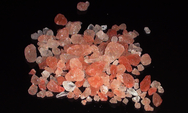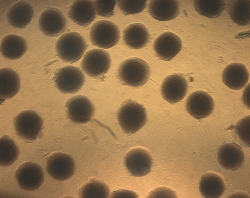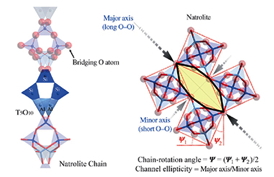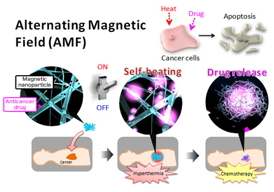Science
Microorganisms found in salt flats could offer new path to green hydrogen fuel

The pink color of salt lakes is caused by salt-loving microorganisms, called halobacteria.
- Read more
- 337 reads
Injectable ‘Smart Sponge’ Holds Promise for Controlled Drug Delivery

In this image, the “smart sponges” are exposed to high glucose levels and are swelling to release insulin.
- Read more
- 379 reads
Snow in an Infant Planetary System

A snow line has been imaged in a far-off infant planetary system for the very first time. The snow line, located in the disc around the Sun-like star TW Hydrae, promises to tell us more about the formation of planets and comets, the factors that decide their composition, and the history of the Solar System.
- Read more
- 405 reads
Paper-thin e-skin responds to touch, holds promise for sensory robotics and interactive environments

In this artistic illustration of an interactive e-skin device, the intensity of the emitted light corresponds to how hard the surface is pressed.
- Read more
- 407 reads
CERN experiments put Standard Model to stringent test – UK reaction here
New results being presented at the EPS-HEP conference in Stockholm, Sweden, this afternoon (19th July 2013) have put the Standard Model of particle physics to one of its most stringent tests to date. The CMS and LHCb experiments at CERN’s Large Hadron Collider will present measurements of one of the rarest measureable processes in physics: the decay of a Bs (pronounced B-sub-s) particle into two muons.
- Read more
- 379 reads
New nanoscale imaging method finds application in plasmonics

Infrared laser light (purple) from below a sample (blue) excites ring-shaped nanoscale plasmonic resonator structures (gold). Hot spots (white) form in the rings' gaps. In these hot spots, infrared absorption is enhanced, allowing for more sensitive chemical recognition. A scanning AFM tip detects the expansion of the underlying material in response to absorption of infrared light.
- Read more
- 381 reads
Disks Don't Need Planets to Make Patterns

Debris disks around stars naturally form complex structures without the presence of a planet. This image shows the dust density and the growth of structure in a simulated disk, which extends about 100 times farther from its star than Earth's orbit around the sun. At left, the disk is seen from a 24-degree angle; at right, it's face-on. Lighter colors show greater dust concentrations.
- Read more
- 346 reads
Using pressure to swell pores, not crush them

- Read more
- 319 reads
Smart anticancer nanofibers: Setting treatments to work together

Design concept for a smart hyperthermia nanofiber system that uses magnetic nanoparticles (MNPs) dispersed in temperature-responsive polymers. Anticancer drug, doxorubicin (DOX), is also incorporated into the nanofibers. The nanofibers are chemically crosslinked. First, the device signal (alternating magnetic field, AMF) is turned 'on' to activate the MNPs in the nanofibers. Then, the MNPs generate heat to collapse the polymer networks in the nanofiber, allowing the 'on-off' release of DOX. Both the generated heat and released DOX induce apoptosis of cancer cells by hyperthermic and chemotherapeutic effects, respectively.
- Read more
- 372 reads
Human Rights
Fostering a More Humane World: The 28th Eurasian Economic Summi

Conscience, Hope, and Action: Keys to Global Peace and Sustainability

Ringing FOWPAL’s Peace Bell for the World:Nobel Peace Prize Laureates’ Visions and Actions

Protecting the World’s Cultural Diversity for a Sustainable Future

Puppet Show I International Friendship Day 2020


